#sylvia pankhurst
Explore tagged Tumblr posts
Text
Yesterday marked the death of Sylvia Pankhurst - one of the finest revolutionary communists to have ever graced Britain's shores. We have rarely seen such fighters on this earth.
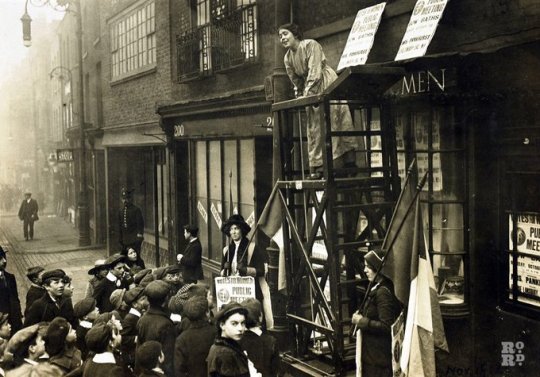
Sylvia was the most tortured suffragette, targetted for her insistence on including working class women within the demands of women's suffrage (much to the disdain of her mother and sister). She did not balk against repeated forced feeding, hunger striking and sleep striking.
She was one of a handful of communists in Britain who opposed the first world war. Her criticism of the war was ceaseless. Practically isolated, she organised relief for working class people in London with cost-price restaurants, free child care for mothers, and more.
She broke with the Labour Party over this, and never returned despite the enormous pressure put upon her by the British labour movement and, later, the Third Internationale. Her arguments with Lenin remain a key debate in communist and British politics.
Pankhurst stood resolutely with the Bolshevik revolution at its outbreak, and was pivotal in organising the "Hands Off Russia" campaign in Britain - which culminated in dock workers across the country refusing to load any munitions to ships.
Pankhurst was an outspoken opponent of racism. Her newspaper - then the Worker's Dreadnought - was the first newspaper in Britain to hire black journalists. When articles written by the Jamaican journalist, Claude McKay, were viewed as seditious, she went to jail for him.
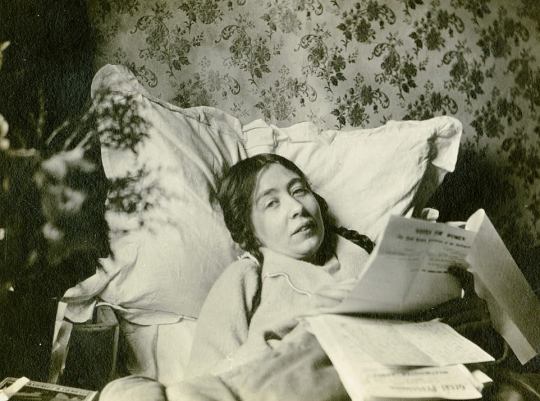
Her support for Irish independence never wavered. She supported Larkin, the Irish Transport and General Workers' Union and United Builders' Labourers Union during the Dublin lock-outs. She stood by the Irish Citizen Army during the Easter Rising.
She was one of the first in Britain to recognise the dangers of fascism, her warnings and agitation beginning as early as 1920. Through this struggle, she became deeply involved in Ethiopian national liberation, where she spent the last years of her life.
All of this is just the tip of the iceberg of the contributions Sylvia made in her life. She did all of this at great cost to herself, enduring her mother and sister denouncing her in the press repeatedly, endless slander, rejection by the mainstream communist movement and worse.

Sylvia also belongs to the great pantheon of disabled revolutionaries, being diagnosed with endometriosis whilst in prison. This, along with the damage done to her organs by forced feeding, left her with often crippling stomach problems.
"I am going to fight capitalism even if it kills me. It is wrong that people like you should be comfortable and well fed while all around you people are starving." She fought until she died, but capitalism didn't kill her. At aged 78, Sylvia passed on.
She was given a state funeral in Ethiopia, and remains the only foreigner buried in the front of Holy Trinity Cathedral. An Ethiopian migrant, cited anonymously in Rachel Holmes' biography of Pankhurst, summed up what she meant to him thus:
"After God, Sylvia Pankhurst".

To learn more about Sylvia, we highly recommend Rachel Holmes' biography, "Sylvia Pankhurst: Natural Born Rebel".
#sylvia pankhurst#communism#politics#marxism#philosophy#communist#anti imperialism#history#leftism#world history#working class#feminism#womens rights#smash the patriarchy#suffragette#suffragists#women's suffrage
106 notes
·
View notes
Text

In a Glasgow Cotton Spinning Mill: Changing the Bobbin (1907) by Sylvia Pankhurst
#In the Glasgow Cotton Spinning Mill Changing the Bobbin#1907#suffragette#feminist#feminism#socialist#art#painting#Sylvia Pankhurst#1900s#Miss Cromwell
25 notes
·
View notes
Text

Bee in the City: Sylvia
Created by: Sneaky Raccoon
Victoria Station, Manchester
It was at the Manchester Mechanics' Institute in 1868 that the first meeting of the Trade Union Congress (TUC) took place. Fifty years later, In 1918, the Pankhursts led a victory that was meant to mark the beginning of the end of a war for gender equality, Sylvia Pankhurst, a suffragette born in Manchester, was imprisoned on numerous occasions.
Interestingly she came to see the campaign for women to have the vote as just one strand in a larger struggle for equality.
#found#art#manchester#modern art#bee#bee in the city#sylvia pankhurst#women’s equality#Sneaky Raccoon#St Valentine’s Day#public art#public sculpture
3 notes
·
View notes
Text

Sylvia Pankhurst, Suffragist, 1916.
©E.O. Hoppé Estate Collection
7 notes
·
View notes
Text


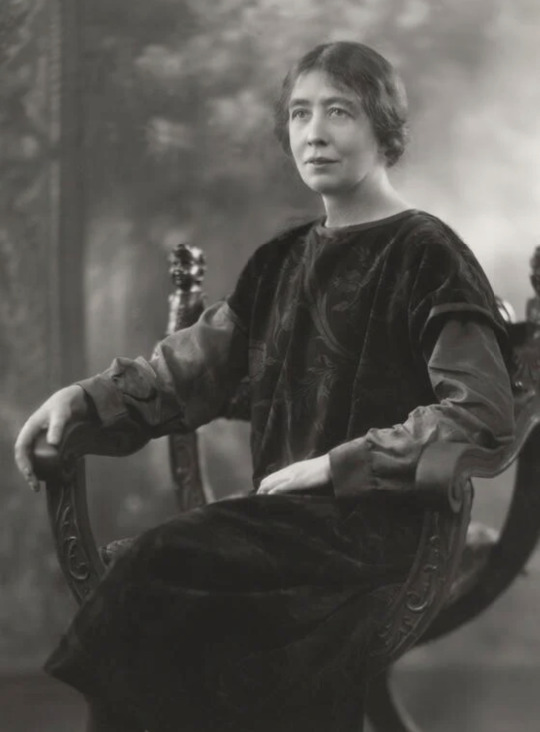
Sylvia Pankhurst, by Sylvia Pankhurst, chalk, circa 1907-1910
Sylvia Pankhurst, by Herbert Cole, chalk. circa 1925
Sylvia Pankhurst, by Bassano Ltd, bromide print, 25 February 1927
Estelle Sylvia Pankhurst (5 May 1882 – 27 September 1960) English feminist and socialist activist and writer. With her mother and sister, she was a leader in the suffrage movement, helping women in the UK claim their right to the vote.
#sylvia pankhurst#feminist action#feminist activism#feminist#feminism#suffrage#women's suffrage#the vote#womens activism#activism#activists#badass#art history#aesthetictumblr#tumblraesthetic#tumblrpic#tumblrpictures#tumblr art#tumblrstyle#artists on tumblr#aesthetic
9 notes
·
View notes
Text
Mrs Pankhurst, Christabel and Sylvia initially had high hopes of the Labour movement which, unlike other parties, professed itself to be in favour of women's suffrage, but they were to find (as women had been finding in many countries of the world once they claimed the right to vote) that there was a great discrepancy between a commitment in theory and the test of practice. They encountered the argument that there were many more important issues than women's suffrage; these important issues of course related to men.
Keir Hardie was one of the few staunch supporters (if not the only one). Many of the other men - past colleagues of Dr Pankhurst - who came to the Pankhurst house to talk politics were extensively grilled by Christabel on their stand on woman's suffrage, and none of them gave satisfactory answers as far as the Pankhursts were concerned. 'Bruce Glasier,' states Sylvia, ‘far from realizing the new spirit that had taken possession of our home, offended badly. It was not essential, he argued, that the whole people should be enfranchised. So long as the division were not upon class lines.’ An old and familiar argument. But Glasier went further and argued as John Stuart Mill's father had done about eighty years before that ‘those outside the suffrage would be represented by those within; their interests would be the same. There was no distinction of interest on sex, but only on class lines’ (S. Pankhurst, 1931, p. 167). As Anna Wheeler had been enraged by James Mill, the Pankhursts were infuriated by Bruce Glasier and his colleagues: ‘This opinion, common enough amongst Socialists of the time was bitterly resented,’ states Sylvia (ibid.).
Men did not and do not hear what women are saying. So what was to be done? As far as the Pankhursts were concerned they decided it was a waste of energy to keep telling men! If after so many years of discussion and debate, of clear and cogent argument, 'radical' men could persist with their line of reason that women had no specific grievances and what minor 'difficulties' did exist would be ironed out after men had fixed up the world for themselves, one would have to be a dunce or a masochist to pursue a policy of trying to change men's minds. That women should stop talking to men about what was to be done, and start talking to each other, was a strategy that gained in popularity among the Pankhursts over the incident of the Pankhurst Hall.
The Hall had been financed by the appeal launched on Dr Pankhurst's death. The Pankhurst women were quite involved in its construction, with Sylvia giving much of her time to it by assuming the responsibility for its decoration. One can imagine their anger, then, when they found they were not allowed to use Pankhurst Hall, for women were not permitted to become members of that particular branch of the Independent Labour Party. This humiliation was rendered even more galling when they discovered that men who chose not to be members of the ILP, were nevertheless permitted to use it. This was too much: it ‘proved the last straw which caused Mrs Pankhurst to decide on the formation of a new organization of women’, said Sylvia (ibid.). She came to the conclusion that 'she had wasted her time in the ILP' (ibid., p. 68), and she wasn't going to waste it any more. There was nothing else for women to do but to assume responsibility for their own quest for political representation: on 10 October 1903 the Women's Social and Political Union was formed. Sylvia reports that the break with the Labour party was not undertaken lightly by Mrs Pankhurst, and that she was extremely distressed, but under the circumstances she thought women had no choice but to work for themselves.
-Dale Spender, Women of Ideas and What Men Have Done to Them
#dale spender#emmeline pankhurst#christabel pankhurst#Sylvia Pankhurst#womens suffrage#womens history#British history#male hypocrisy#female oppression
19 notes
·
View notes
Text

4 notes
·
View notes
Text
1 note
·
View note
Text
World Premiere in a Library!
The London Library A brilliant night at the London Library with the world premiere of a play ‘Between Two Fires’ written by Sylvia Pankhurst on toilet paper when she was imprisoned! Review to follow. And details of talk by Labour MP Chris Bryant.

View On WordPress
0 notes
Text
https://romaniasweetromania.com/2023/01/mihai-eminescu-tu-i-neamul-nevoii/

#Andrei Bantas#annie bentoiu#Caragiale#cleopatra poenaru#corneliu m popescu#dimitrie cuclin#Eminescu#eufrosina popescu#leon levitki#Luceafarul#Maiorescu#Mihai Eminescu#Mitte Kremnitz#nicolae vlad#pur si simplu#slavici#sylvia pankhurst#tu i neamul nevoii#Veronica Micle#Vlahuta#poeti romani#poezie romaneasca#traduceri#amita bhose#traducatori
0 notes
Text
31/2023: Esther Roper, 4. August 1868
Sie setzte sich für die Rechte von Arbeiterinnen ein und brachte das gender-kritische Magazin Uranie heraus.
By Unknown author, Public Domain Bereits kurz nach ihrer Geburt in Chorley, Lancashire – ein Ort, der von den nahegelegenen Kohleminen und Textilindustrie geprägt war –, verließen die Eltern von Esther Roper England als Missionare(1). Ihr Vater war ehemaliger Fabrikarbeiter, ihre Mutter stammte aus einer Familie irischer Einwanderer, bei denen Esther aufwuchs. Sie besuchte eine Schule der Church…

View On WordPress
#aktivistys des intersektionalen feminismus#arbeiterbewegung#arbeiterklasse#christabel pankhurst#constance gräfin mankievicz#emmeline pankhurst#esther roper#eva gore-booth#frauenfiguren#george macdonald#irene clyde#kalender#pit-brow lasses#suffragette#sylvia pankhurst#university of manchester#urania#women&039;s suffrage#women&039;s social and political union#wspu
0 notes
Text
2024 reading wrap up

books I read (rereads in green):
Nature Human Nature And Human Difference by Justin Smith
Resurgir curated by Lorenzo Incarbone
Sandman: Overture by Neil Gaiman
The Pornographer by Restif De La Bretonne
Storie Brutte Sulla Scienza by Barbascura X
Only Dull People Are Brillian At Breakfast by Oscar Wilde
A Day Of Fallen Night by Samantha Shannon
The Ballad Of The Reading Gaol by Oscar Wilde
Notes On Camp by Susan Sontag
The Prince And The Dressmaker by Jen Wang
Oh! Il Libro Delle Meraviglie by Leo Ortolani
Dubliners by James Joyce
The Great God Pan by Arthur Machen
Il Grande Ratolik by Leo Ortolani
Emmeline Pankhurst by Mariapaola Pesce and Paola Zanghi
Babel by R.F. Kuang
Carmilla by Sheridan Le Fanu
Her Body And Other Parties by Carmen Maria Machado
The Vampyre by John William Polidori
Passage On The Secret History Of An Irish Countess by J. Sheridan Le Fanu
The Daughtest Of Salem by Thomas Gilbert
Rita Hayworth And The Shawshank Redemption by Stephen King
Gideon The Ninth by Tamsyn Muir
The Mysterious Study Of Doctor Sex by Tamsyn Muir
Apt Pupil by Stepehn King
Harrow The Ninth by Tamsyn Muir
Nona The Ninth by Tamsyn Muir
Miti E Leggende Dei Celti by Mila Fois
A Psalm For The Wild Built by Becky Chambers
The Southern Book Club's Guide To Slaying Vampires by Grady Hendrix
Quando Muori Resta A Me by Zerocalcare
Storie Di Merda by Barbascura X
Richard II by William Shakespeare
The Hobbit by J.R.R. Tolkien
Norse Mythology graphic novel volume 1
Norse Mythology graphic novel volume 2
A Prayer For The Crown Shy
short stories by Charlotte Perkins Gilman
Something Is Killing The Children volume 7
If We Were Villains by M.L. Rio
Life Isn't Binary by John-Meg Barker and Alex Iantaffi
Dream Hunters by Neil Gaiman
My Best Friend's Exorcism by Grady Hendrix
The Hollow Places by T. Kingfisher
L'Idea di Medioevo by Giuseppe Sergi
Due Racconti di Vampiri - shoet stories by Frederick Cowles
The Twisted Ones by T. Kingfisher
What Moves The Dead by T. Kingfisher
The Fall Of The House of Usher by Edgar Allan Poe
The White People by Arthur Machen
The Road - the graphic novel adaptation by Manu Larcenet
The Willows by Algernon Blackwood
A House With Good Bones by T. Kingfisher
What Fiests At Night by T. Kingfisher
The Spirit Bares Its Teeth by Andrew Joseph White
I Have No Mouth And I Must Scream by Harlan Ellison
Interworld by Neil Gaiman and Michael Reaves
L'Importanza di Chiamarsi Oscar Wilde by Licia Cascione and Tommaso Vitiello
Questioni di un Certo Genere by il Post
The Lord Of The Rings by J.R.R. Tolkien
Storia Degli Stati Sabaudi by Andrea Merlotti and Paola Bianchi
I Belli Hanno Rotto Il Cazzo by Barbascura X
Lolly Willowes by Sylvia Townsend Warner
This Is How You Lose The Time War by Max Gladstone and Amal El-Mohtar
Re:Dracula
The Adventures of Amina Al Sirafi by Shannon Chkraborty
Genderqueer by Maia Kobabe
The Forbidden Harbor by Stefano Turconi and Teresa Radice
Sacred Bodies by Ver
Seghe Mentali Cosmiche by Barbascura X
Costituzione by Maurizio Floravanti
Bi by Julia Shaw
Governo by Paolo Colombo
Graveyard Shift by M.L. Rio
A Babbo Morto by Zerocalcare
Fortunately, the Milk by Neil Gaiman
A Dog's Heart by Mikhail Bulgakov
the books I have dnf-ed:
The Last Man by Mary Shelly
Venerdì 12 by Leo Ortolani
The Dreamchatcher by Stephen King
Night Man by Leo Ortolani
La Donna Senz'Ombra by Hugo von Hofmannsthal
#i am really liking these graphic wrap ups storygraph is doing i should start posting them monthly!#anyway here is my entire wrap up of the year#as you can see i completly stopped posting reviews during the year and i would like to slowly implement them again but we'll see#2024 wrap up#wrap up#reading wrap up#bookblr#booklr#reading#book wrap up#books#yearly wrap up#studyblr#uniblr#productivity#journaling
31 notes
·
View notes
Text
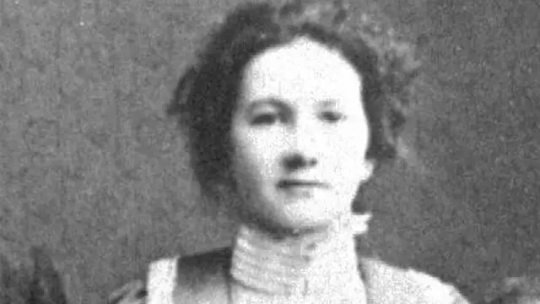

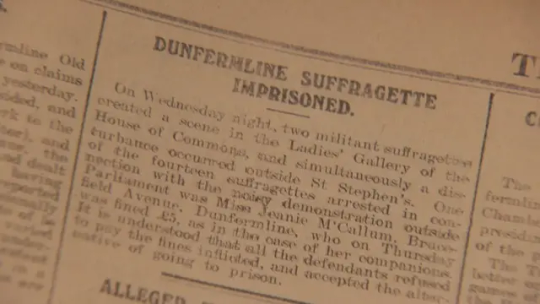
Janet “Jenny” McCallum was born in Dunfermline on July 21st 1881.
Jenny, as she became known, was the eldest of the thirteen children of John and Jenny McCallum. Her father worked on the construction of the Forth Bridge. She worked in a linen weaving factory and she was unusual in becoming a working-class woman who was active in the women’s suffrage movement.
Jenny was arrested, fined then imprisoned for her part in a demonstration at the Houses of Parliament.
In 1907 she organised what was called a “Great Demonstration” where the national leaders of the Women’s Social and Political Union would come to West Fife.
By 1908, she had joined Anna Munro in the Women’s Freedom League. The league was a break away group from the WSPU who objected to the autocratic management of the Pankhursts. By 27th October 1908 she was in London. She had abandoned her job in a Dunfermline linen factory. Jenny and 14 others were arrested after staging a demonstration in Old Palace Yard outside the houses of parliament; “a newspaper report says "four very athletic suffragettes clambered on a statue”.“. She was given the choice of paying a £5 fine or serving a sentence and chose a one month sentence. After leaving Holloway Prison she went to Glasgow on behalf of the WFL.
Jenny returned to Dunfermline and after some time she went back into work so that she could help support her mother and sister. She married Harry Richardson in 1915 and they had three children. In 1919 she came to the fore in a dispute with the Scottish National Housing Company. She gathered attention for the Rosyth tenants who were involved in what was presented as a women led rent strike. The dispute led to some tenants appearing in court and McCallum was able to arrange for Sylvia Pankhurst to speak on their behalf.
In the 1920s Jenny and Harry decided to emigrate as there was little work in Scotland. By the time votes for women were agreed, she was living in South Africa.
Jenny McCallum died in Pretoria in South Africa 1946.
15 notes
·
View notes

